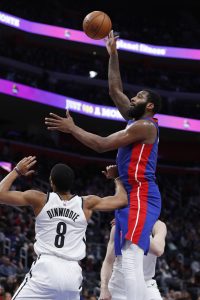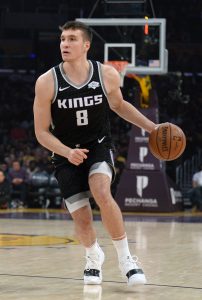While non-guaranteed NBA contracts don’t technically become fully guaranteed until January 10, January 7 is really the day to watch. Because players have to clear waivers before January 10 to avoid having their salaries locked in for the rest of 2019/20, a team will have to release a player by next Tuesday at the latest to avoid guaranteeing his contract.
As our list of non-guaranteed contracts by team shows, there are a number of players around the NBA who don’t have fully guaranteed deals, though many are in no danger of being waived by next Tuesday. It’s not as if the Lakers are seriously considering whether or not to guarantee Dwight Howard‘s minimum salary. Ditto for the Jazz and Royce O’Neale, and several others players on that list.
However, there are at least a handful of players worth keeping an eye on as next Tuesday’s deadline nears. Here’s a quick breakdown of some of them:
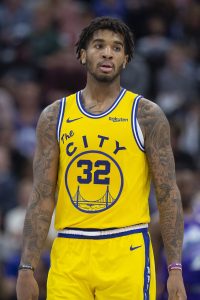 Marquese Chriss, F/C (Warriors): A handful of injuries opened a path for Chriss to get regular rotation minutes this season and he has made the most of the opportunity, averaging 7.4 PPG, 5.3 RPG, and 1.7 APG in 33 games (17.2 MPG). He’s done enough on the court to earn a full salary guarantee, but retaining him would limit the hard-capped Warriors‘ flexibility at the back of their roster. Golden State’s decision on Chriss will likely come down to how confident the team is that minimum-salary players like Alec Burks and Willie Cauley-Stein can be moved without taking back money in return — trading those vets would open up room to promote two-way players Ky Bowman and Damion Lee while keeping Chriss.
Marquese Chriss, F/C (Warriors): A handful of injuries opened a path for Chriss to get regular rotation minutes this season and he has made the most of the opportunity, averaging 7.4 PPG, 5.3 RPG, and 1.7 APG in 33 games (17.2 MPG). He’s done enough on the court to earn a full salary guarantee, but retaining him would limit the hard-capped Warriors‘ flexibility at the back of their roster. Golden State’s decision on Chriss will likely come down to how confident the team is that minimum-salary players like Alec Burks and Willie Cauley-Stein can be moved without taking back money in return — trading those vets would open up room to promote two-way players Ky Bowman and Damion Lee while keeping Chriss.- Javonte Green, F (Celtics): Green has been solid in limited minutes so far, shooting 68.4% on two-point attempts for the season. He has also appeared in every one of the Celtics‘ games since November 25. Still, he has played double-digit minutes just four times during that stretch, and waiving him would open up a spot on Boston’s roster, increasing the club’s flexibility at the trade deadline and possibly on the buyout market. If the Celtics are confident in Green’s ability to contribute off the bench, they’ll hang onto him and worry later about whether or not they need to open a roster spot.
- Derrick Walton, PG (Clippers): After playing just nine total minutes in the Clippers‘ first 19 games, Walton has appeared in 13 of the club’s last 15 contests. He’s still not a crucial part of the rotation, but he has performed well when called upon, so the Clippers will face the same decision the Celtics will — does opening up a roster spot in advance of trade and buyout season make more sense than locking in their 15th man’s 2019/20 salary for the year?
- The Rockets’ non-guaranteed players: The Rockets have a full 15-man roster, but three of those 15 players only have partial guarantees. Houston could part ways with Gary Clark, Isaiah Hartenstein, and/or Ben McLemore by January 7 and avoid taking on their full cap hits, which might appeal to a Houston team barely over the tax threshold. However, McLemore is playing heavy minutes and seems safe, while Clark has been seeing more regular playing time lately too. Up until this past weekend, I would’ve viewed Hartenstein as the odd man out, but he had his two best games of the season on Saturday and Sunday, averaging 14.0 PPG and 11.0 RPG on 72.2% shooting. Houston may simply hang onto all three players.
- The Wizards’ non-guaranteed players: Like the Rockets, the Wizards are currently carrying three players on non-guaranteed contracts. Washington’s situation is a little different though, since two of the team’s non-guaranteed players – Gary Payton II and Johnathan Williams – were recently added using the hardship exception. The Wizards, who have 17 players on standard contracts, will have to get back down to 15 as the roster gets healthier. Whether that happens before or after January 7, the club will likely eventually part ways with two players out of the group that includes Payton, Williams, and Justin Robinson, unless they trade or cut a player with a guaranteed salary. For now, Payton looks like the least expendable of the three.
Photo courtesy of USA Today Sports Images.
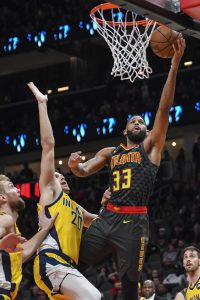 Allen Crabbe
Allen Crabbe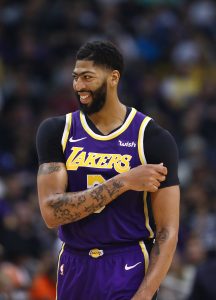 For a star like
For a star like 